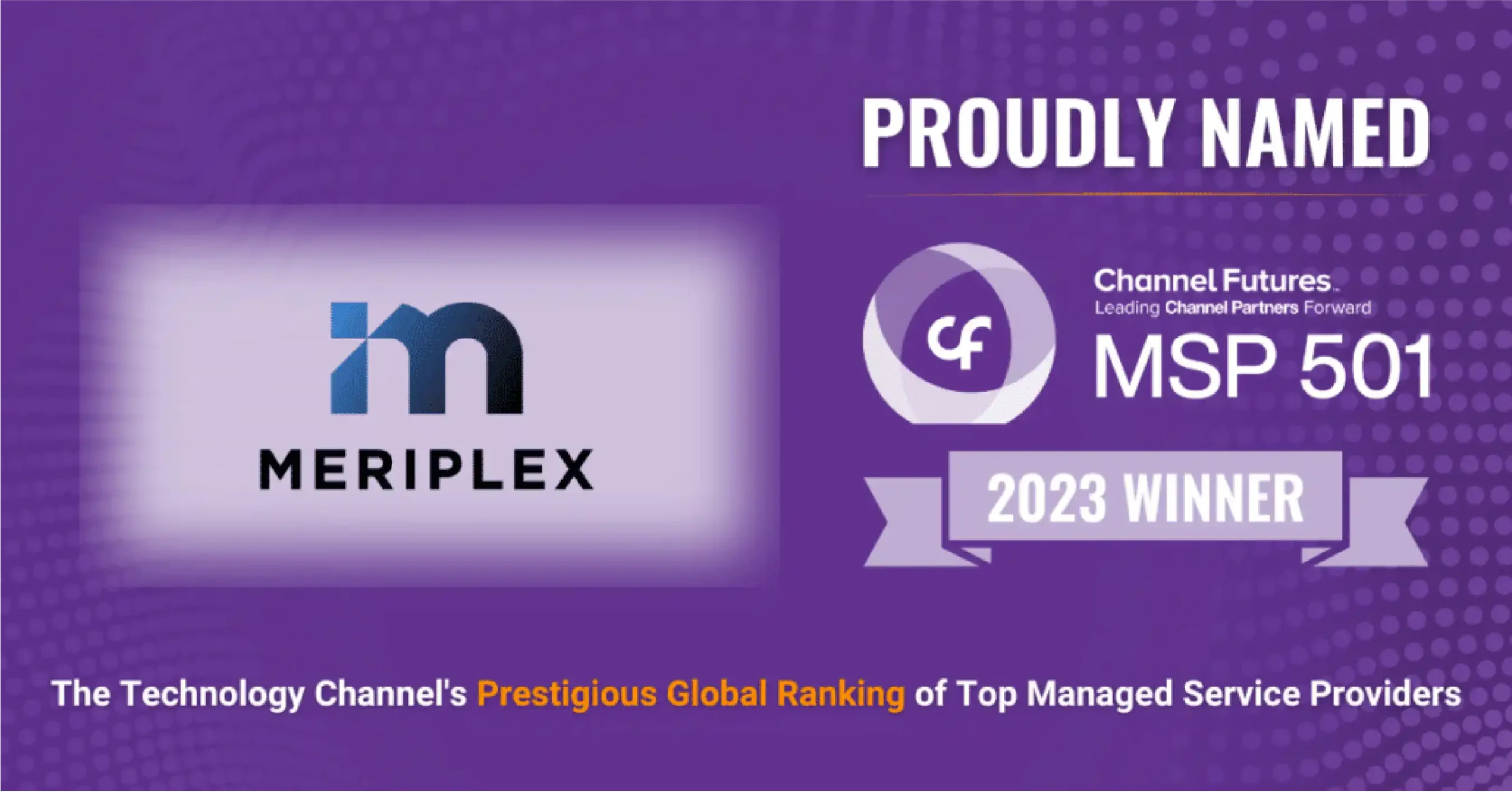The Executive's Guide to IT Budgeting
Create a smarter, more cost-effective IT budget that not only aligns with your business’s strategic goals but also empowers your organization to grow, scale, and stay ahead in an ever-evolving technology landscape.
IT budgeting is critical to your business’s success, especially with the increasing complexity of cloud infrastructure, cybersecurity demands, and digital transformation efforts. At Meriplex, we understand the pressures IT leaders face to ensure every dollar spent aligns with strategic goals. That’s why we created The Executive’s Guide to IT Budgeting—a powerful resource designed to help you build an IT budget that is cost-effective, predictable, and perfectly in sync with your business priorities.
This Guide Will Help You:
- Link Business Goals to IT Investments: Learn how to ensure your IT spending directly supports your company’s strategic objectives.
- Overcome IT Budgeting Challenges: Get actionable tips for addressing issues like unpredictability and misalignment in your IT budget.
- Gain Visibility Into Spend: Discover methods to track and understand where your IT dollars are going, making your budget more transparent.
- Strengthen ROI: Understand how to ensure that IT investments drive measurable business outcomes, boosting your return on investment.
Download the eBook
Fill out the form below to get immediate access to this eBook and start your journey to a more cost-effective IT strategy.
Common IT Budgeting Questions
As businesses navigate the complexities of IT budgeting, executives often face numerous questions about how to effectively allocate resources while ensuring alignment with business goals. To help you make informed decisions and optimize your IT spend, we’ve compiled answers to some of the most commonly asked questions about IT budgeting. These insights will guide you in overcoming challenges, controlling costs, and ensuring that your IT investments deliver maximum value.
1. How do I align my IT budget with business goals?
Start by understanding your business objectives. Then, prioritize IT investments that will support those goals, such as improving customer experience, scaling operations, or enhancing security. Regularly review and adjust to keep IT in sync with the company’s evolving strategy.
2. How can I control unpredictable costs?
To control unpredictable IT costs, use fixed-cost models like managed service agreements or cloud solutions with predictable pricing. Implement proactive maintenance, plan for potential emergencies, and regularly review your IT spending to identify and eliminate inefficiencies.
3. What are the most common challenges in IT budgeting?
The most common challenges include escalating costs, misalignment with business goals, lack of ROI visibility, managing multiple vendors, and dealing with unexpected expenses like system failures or compliance updates.
4. How do I measure the ROI of my IT investments?
Measure ROI by assessing how IT investments improve efficiency, reduce downtime, or enhance customer satisfaction. Set clear KPIs aligned with business goals, such as cost savings, revenue growth, or operational improvements, and track these over time.
5. Should I include cybersecurity in my IT budget?
Yes, cybersecurity should be a key component of your IT budget. Given the increasing threats, investing in robust security measures protects your business from data breaches, financial loss, and reputational damage.
6. How often should I review my IT budget?
Review your IT budget quarterly or biannually to ensure it’s aligned with business changes, new technologies, and shifting priorities. This helps you identify areas for improvement and adjust spending as needed.
Insights
Essential Guides, Insights, and Case Studies for IT Solutions.

In 2026, cyber threats are not just an IT problem—they’ve become a

Technology is becoming a top investment priority for business leaders. In fact,

DRaaS in Civil Construction
Bay Cities Paving & Grading faced an unexpected crisis when a fire threatened theirbusiness, particularly

DRaaS in Distribution
With many locations across North America, Kingspan NA businesses require continuous access to centralized ERP and Asset

SD-WAN in Civil Engineering
BGE, Inc. has a reputation for its agility and nimbleness in meeting community and customer needs.

SD-WAN in Insurance
Myron Steves is an independent managing general agency and wholesaler working with overseas carriers that

SD-WAN in Healthcare
As a leading business partner for optometry and ophthalmology practices, EyeCare Partners provides business support

Houston, TX – 2/20/2025 – Meriplex, a leading managed IT and cybersecurity

Houston, Texas – Meriplex, a national leader in managed IT and cybersecurity solutions,

Meriplex Ranked on Channel Futures 2023 MSP 501—Tech Industry’s Most Prestigious List

Meriplex Acquires Systems Solution, Inc. (SSI) Houston, TX – May 22, 2023– Meriplex,

Meriplex again makes the list of CRN’s top rated MSPs in North

The List Recognizes the Most Future-Minded, Influential and Impactful MSP Channel Leaders

Meriplex Acquires F1 Solutions Houston, TX – September 29, 2022 – Meriplex, a

Meriplex Acquires CPI Solutions Houston, TX – August 25, 2022 – Meriplex,

Houston, Texas (July 18, 2022) – Meriplex, a leader in managed cybersecurity,

Houston, TX – July 14, 2022 – Meriplex, a nationwide leader in managed

Meriplex Recognized on Channel Futures 2022 MSP 501—Tech Industry’s Most Prestigious List

Houston, TX – June 2, 2022 – Meriplex, a nationwide leader in

Technology is becoming a top investment priority for business leaders. In fact,

Healthcare organizations handle extremely sensitive patient data and must comply with HIPAA’s

Mid-market IT leaders know the juggling act all too well: managing hundreds

Mid-market business leaders know the feeling: you’re constantly putting out IT fires,

If you’re an IT leader or CIO at a mid-sized healthcare practice—whether

Mid-market CFOs and COOs know that controlling IT costs can feel like

Choosing a managed services provider (MSP) is more than a technical decision—it’s

Mid-market businesses in healthcare, manufacturing, professional services and beyond often face a

Mergers and acquisitions (M&A) can feel like tightrope walks for mid-market and

Mid-market companies often struggle to balance robust IT strategy with stringent cybersecurity

Most companies don’t go hunting for a managed IT services provider because

If you oversee operations or technology in a senior living community, you
- Policies
- Terms & Conditions
- Statements
- Records
- Notices
- Meriplex Telecom
- © Copyright - Meriplex Communications 2024


